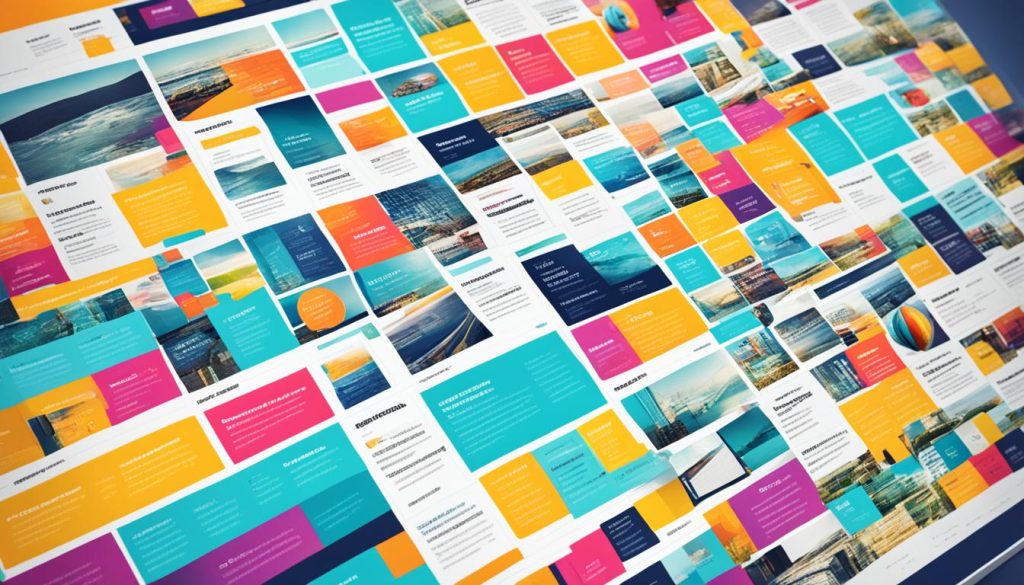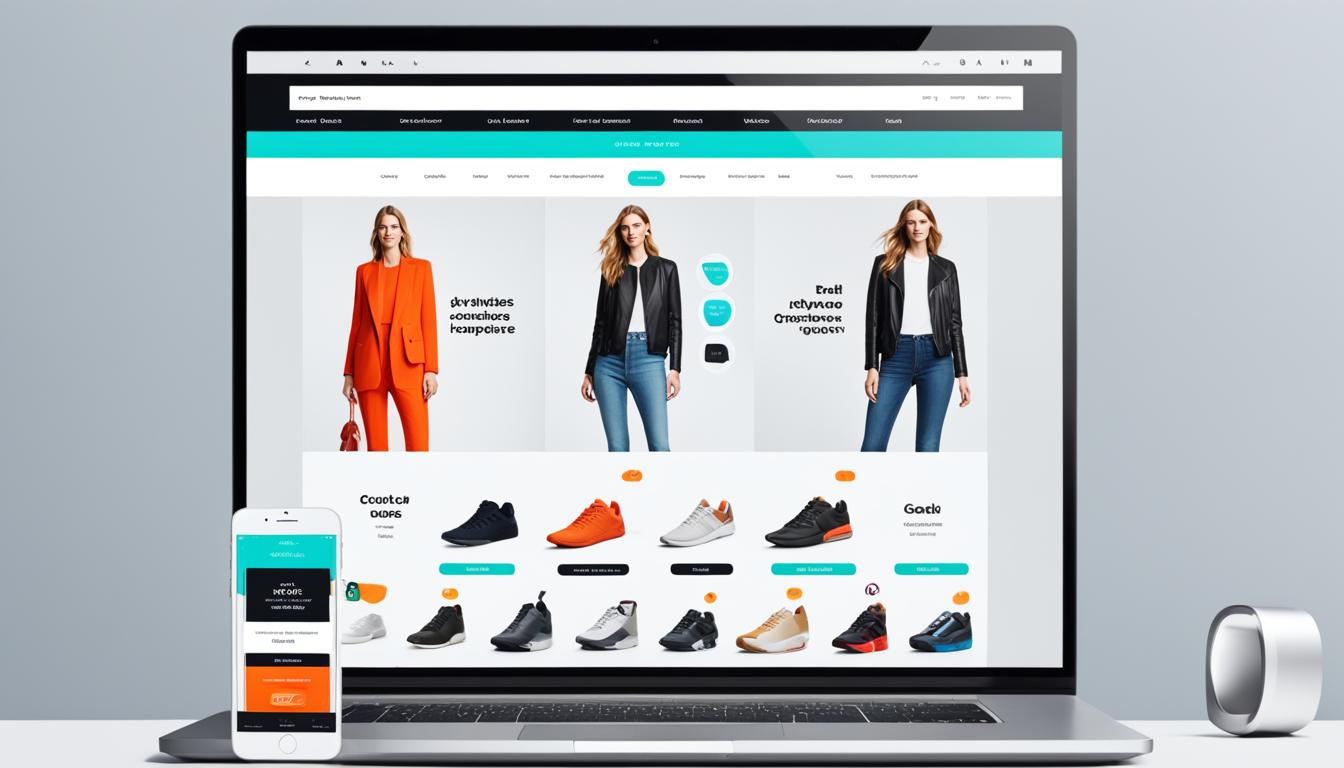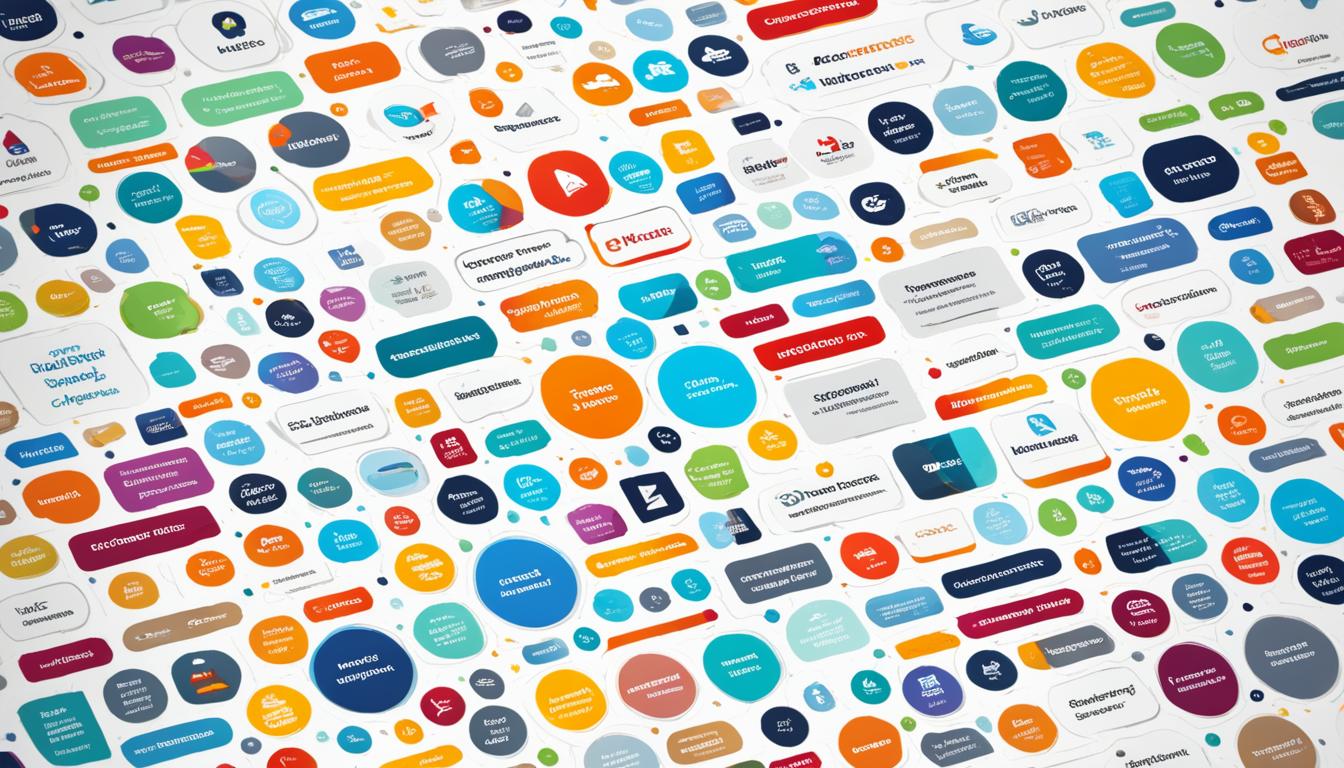Build Your Website
Did you know that 90% of consumers research a product or service online before making a purchase? Having a professional and user-friendly website is no longer optional; it’s a necessity for businesses of all sizes. Whether you’re a local business owner, a freelancer, or an aspiring blogger, building your website is the first step towards establishing your online presence and reaching a wider audience.
Key Takeaways:
- Building your website is crucial for establishing your online presence in today’s digital world.
- A professional website design can significantly impact your brand image and user experience.
- Optimizing your website for SEO is essential for improving search engine visibility.
- Promoting your website through digital marketing strategies helps drive traffic and increase engagement.
- Regularly updating and refining your website is key to staying ahead of the competition.
Choosing the Right Template for Your Website
When building your website, it’s important to choose the right template that aligns with your brand and goals. A website template provides you with a pre-designed framework that can be customized to fit your personal style.
Look for templates that offer responsive design, meaning they will adapt to different screen sizes and devices. This is crucial in today’s mobile-driven world, as more and more people access websites on their smartphones and tablets.
Responsive design ensures that your website looks and functions flawlessly on any device, providing a seamless user experience and maximizing your reach.
Additionally, consider the customization options available with each template. You want to have the freedom to make your website unique and tailored to your brand.
Look for templates that offer a wide range of customization options, such as the ability to change colors, fonts, and layouts. This will allow you to create a website that truly reflects your brand identity and stands out from the competition.
A website builder with design flexibility is also essential. It should provide you with the tools and features you need to bring your vision to life. Look for a website builder that offers drag-and-drop functionality, allowing you to easily rearrange elements and customize your website without any coding knowledge.
Benefits of Choosing the Right Template:
- Ensures a visually appealing and professional-looking website
- Improves user experience by providing responsive design
- Allows for customization to align with your brand identity
- Offers design flexibility without the need for coding
By carefully selecting the right template for your website, you can save time and effort in the design process while ensuring a stunning and functional online presence.
| Key Features | Responsive Design | Customization Options | Design Flexibility |
|---|---|---|---|
| Template 1 | ✅ | ✅ | ✅ |
| Template 2 | ✅ | ✅ | ✅ |
| Template 3 | ✅ | ✅ | ✅ |
Creating Engaging Content for Your Website
When it comes to building a successful website, creating engaging content is key. By incorporating well-written text, high-quality images, and relevant videos, you can captivate your audience and keep them coming back for more. But how do you ensure your content stands out in a sea of websites?
First and foremost, it’s important to understand your target audience. Consider their needs, interests, and preferences to create content that resonates with them. Whether you’re providing informative articles, entertaining videos, or visually stunning imagery, your content should be tailored to your audience’s tastes.
Another crucial aspect of engaging content is incorporating your branding throughout. Use your logo, color scheme, and messaging to create a cohesive and memorable experience for your visitors. This helps to build brand recognition and reinforces your messaging.
Don’t forget about SEO optimization! Incorporate relevant keywords in your text and image alt tags to improve your website’s visibility in search engine results. This will help drive organic traffic to your site and increase your chances of reaching your target audience.
Now, let’s take a look at some best practices for each type of content:
- Website Content: Use clear and concise language to communicate your message effectively. Break up text with headers, bullet points, and numbered lists to improve readability. Include internal links to other relevant pages within your website to encourage visitors to explore further.
- Images: Choose high-quality, visually appealing images that complement your content. Use alt tags to describe the image using relevant keywords, helping search engines understand and index your images.
- Videos: Create informative or entertaining videos that are relevant to your website and audience. Embed videos directly into your website using the appropriate HTML tags to ensure seamless playback.
By following these tips and creating engaging content, you can enhance your website’s overall user experience, build brand credibility, and increase your chances of converting visitors into loyal customers.
| Content Type | Best Practices |
|---|---|
| Website Content | Use clear language, break up text, include internal links |
| Images | Choose visually appealing images, use alt tags |
| Videos | Create relevant and engaging videos, embed them correctly |
Remember, creating engaging content is an ongoing process. Regularly update and refresh your content to keep it relevant and interesting for your audience. By continually investing in your website’s content, you can attract and retain more visitors, ultimately achieving your online goals.

Optimizing Your Website for SEO
SEO optimization plays a crucial role in improving your website’s visibility in search engine results. By implementing effective strategies, you can increase your search engine visibility, drive organic traffic, and reach your target audience. Here are some key factors to focus on when optimizing your website:
- Keyword Research: Conduct thorough keyword research to identify the terms and phrases your target audience is searching for. By understanding their search intent, you can create relevant and optimized content that aligns with their needs.
- Keyword Implementation: Once you have identified your target keywords, strategically incorporate them throughout your website. Optimize your page titles, meta descriptions, headings, and content to enhance search engine visibility.
- Meta Tags: Use meta tags effectively to provide concise and descriptive information about your web pages. Craft compelling meta titles and descriptions that include relevant target keywords to improve click-through rates from search engine result pages (SERPs).
- Site Speed: Enhance your website’s loading speed to create a positive user experience. Page speed is a crucial ranking factor, as search engines prioritize fast-loading websites. Optimize images, minimize code, and leverage caching techniques to improve site speed.
- Mobile Optimization: With the increasing use of mobile devices, it’s essential to ensure your website is optimized for mobile users. Responsive design and mobile-friendly features improve user experience, leading to higher search rankings.
Regularly update and optimize your website to stay ahead of the competition. Monitoring analytics and keeping up with the latest SEO trends and algorithm changes will help you maintain a strong online presence and drive relevant traffic to your website.

| SEO Factor | Description |
|---|---|
| Keyword Research | Conduct thorough research to identify relevant keywords and phrases used by your target audience. |
| Keyword Implementation | Incorporate target keywords strategically throughout your website’s content, meta tags, and headings. |
| Meta Tags | Create compelling and optimized meta titles and descriptions to improve click-through rates from SERPs. |
| Site Speed | Optimize your website’s loading speed by optimizing images, minimizing code, and leveraging caching techniques. |
| Mobile Optimization | Ensure your website is optimized for mobile devices to provide a seamless user experience. |
Promoting Your Website and Driving Traffic
Now that your website is live, it’s time to promote it and drive traffic to attract visitors. Utilizing digital marketing strategies such as social media marketing, email marketing, and online advertising can significantly increase your website’s visibility and reach your target audience effectively.
Start by leveraging the power of social media platforms to engage with potential customers. Create engaging and shareable content that resonates with your audience and encourages them to interact with your website. Share informative blog posts, eye-catching visuals, and engaging videos to generate interest and drive traffic to your website.
Email marketing is another valuable tool to promote your website. Build an email list by offering visitors an incentive, such as a downloadable guide or exclusive discounts. Use email newsletters to keep your subscribers informed about new products or services, promotional offers, and educational content that drives them back to your website.
In addition to social media and email marketing, online advertising can significantly boost your website’s visibility. Consider running targeted ads on platforms like Google Ads or social media platforms to reach your desired audience. By optimizing your ad campaigns with relevant keywords and compelling visuals, you can drive quality traffic to your website and increase conversions.
Remember that content creation plays a vital role in promoting your website. Regularly update your blog with informative articles, how-to guides, and industry insights that provide value to your audience. By consistently delivering high-quality content that addresses their needs and interests, you can establish yourself as an authority in your industry and attract organic traffic to your website.
FAQ
Why is building a website important for establishing an online presence?
What are some considerations when choosing a website template?
How can I create engaging content for my website?
How can I optimize my website for SEO?
How can I promote my website and drive traffic?
- Shop for Server & Workstation Systems & more - February 25, 2025
- IP Geolocation API and IP Location Lookup Tools - February 24, 2025
- What is GoDaddy? Everything You Need to Know in 2024 - February 23, 2025





















Post Comment
You must be logged in to post a comment.